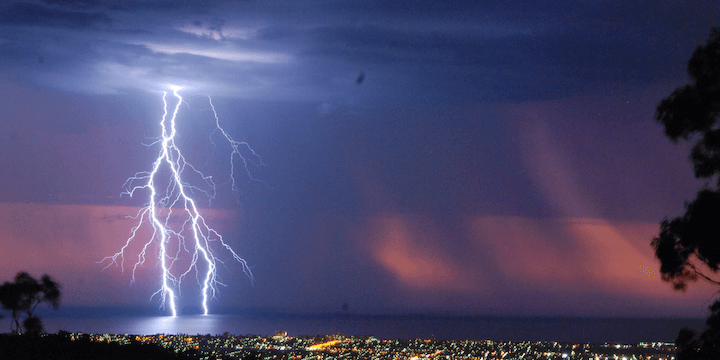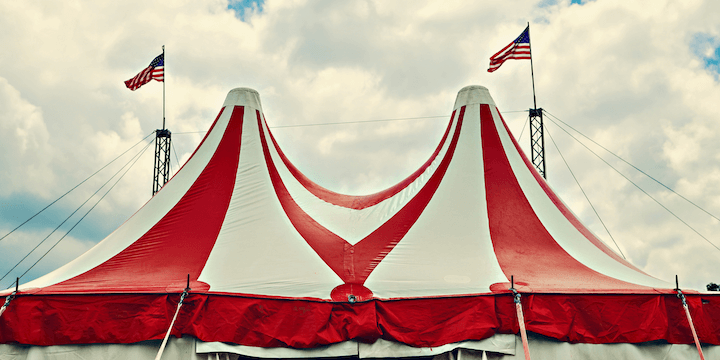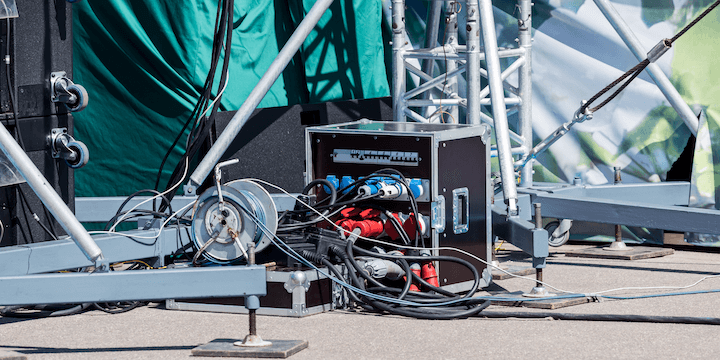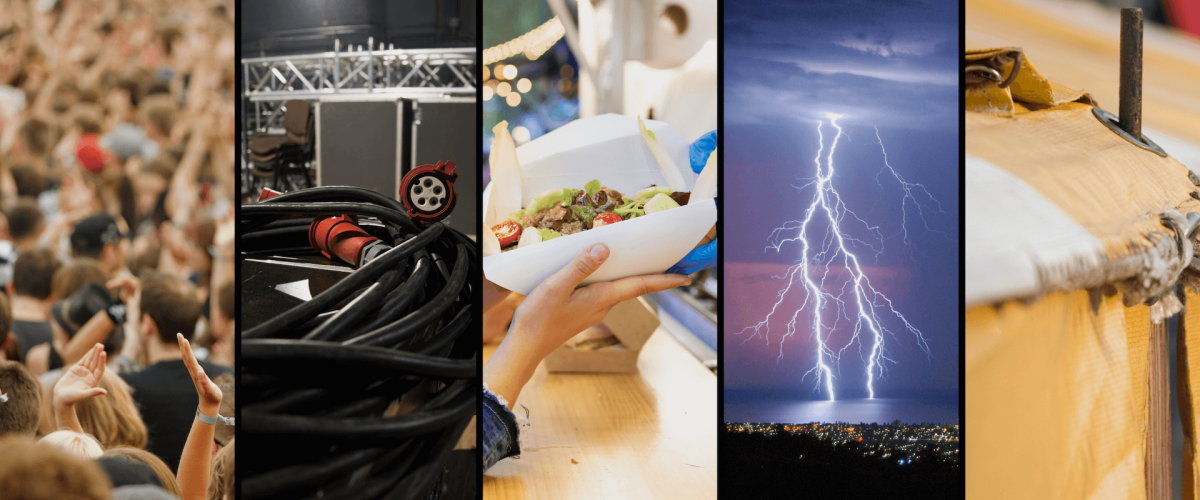As the pandemic recedes and the weather warms, outdoor concerts, festival, and fairs are back. For those involved in outdoor event production and promotion, it can’t come soon enough. Our focus can return to safety issues beyond Covid protection.
Outdoor events have certain safety issues that indoor venues don’t have. The reason for this is usually two-fold. The first is that they usually involve temporary arrangements as opposed to permanent provisions for the items involved in safety planning. The second is the exposure to weather incidents that would not prevent an indoor facility from continuing the event.
Temporary Arrangements: Outdoor festival or concert events typically take place infrequent enough that they lack permanent facilities. Unlike venues, such as county or state fairs, most concerts or festivals are smaller events that take place in an open space without permanent facilities for such events.
That means that the stages for such events must be either built or brought in as mobile stages. The sound and lighting equipment must also be attached to the stage as well, typically in a fly pattern where lights and sound are hung from the stage. Even permanent bandstands will require rigging sound and lighting to them for an event.
Think about what goes into festival or concert production. There are many other temporary arrangements besides the staging, sound, and lighting equipment. There are tents involved, food and beverage vendors with a variety of different configurations for dispensing their products, latrines, exhibits and often children’s activities such as bounce houses. For many events, the vendors involved may not be known to the festival production team.
While an extreme weather event such as a tornado would impact both permanent indoor facilities and outdoor events, most adverse weather events that hamper outdoor festivals and concerts are not that extreme. They usually involve high wind, heavy rain, or lightning in the vicinity of the event, or an earlier adverse event that makes getting to the venue difficult or makes the site no longer suited for the audience or performers.
With this in mind, let’s review items to be addressed as part of any safety plan, recognizing that many of these issues are relevant for indoor events as well.
All these temporary arrangements create additional safety issues different from that of a permanent facility with known vendors and setups. Let’s look at the following safety concerns for an outdoor event. Whether it’s a festival, concert, or other outdoor live event production, make sure you address the following.
-
-
- Crowd Safety
- Food Safety
- Weather Safety
- Structural Safety
- Electrical Safety
-
Crowd Safety for an Outdoor Event

-
- Be Aware of Your Audience: Knowing the nature of the event and who is likely to attend is a key element of knowing how to deal with the anticipated crowds. A family-oriented folk festival will attract a far different crowd than a heavy metal rock concert.
- Prevent Overcrowding: The venue’s maximum capacity is an important number. If the event might reach or exceed maximum capacity, it’s important the organizers plan accordingly and be prepared to handle excess attendees. Safe travel routes for ingress egress and to and from facilities must be maintained.
- Crowd Movement: The venue must allow for safe crowd movement during ingress, egress and to and from facilities such as restrooms and vendors. It also should provide for emergency staff to move freely among the attendees if necessary. Depending on the nature of the event and venue, a lot of clear signage directing the movement of the crowd is necessary. We all know what a crowd surge toward the stage can do if not planned for, but egress in the case of the need to clear the facility in an emergency is also critical. People being crushed because of blocked or insufficient exits is one of the deadly contributors to crowd disasters.
For a fuller treatment of crowd management, festival, concert promoters and those organizing large events in the U.S. should be familiar with ANSI ES1.9-2020 Event Safety – Crowd Management Standard. This second in a series of event safety guidance standards in development by the Entertainment Services and Technology Association (ESTA) Standards Program. It’s the only ANSI-accredited program dedicated to the needs of the entertainment technology industry. You can find a free copy to download at the Event Safety Alliance website.
Food Safety for Outdoor Events

-
- Make sure they have a current health permit from the local health department. When TSE produces a festival or concert, we work with the health department to obtain a list of current holders of food health permits. We also ask vendors who want to participate to furnish us a copy of their current health permit for the venue’s location before allowing them to participate as a food vendor.
- Require that food and beverage vendors have commercial or event liability insurance for the event.
- Work with the health department to make sure food vendors have the equipment required at their concession, e.g., fire extinguishers, handwashing stations, etc., including checking for items after they set up.
- Being explicit in providing directions to food vendors, e.g., all preparation areas need to be covered to prevent contamination by rain and animal droppings; food and packaging should be kept off the ground; and the food should be kept covered.
If you do these things, festival or concert producer or organizer have done their part to make sure that the food served at their events is safe. Whether it tastes good is another story.
Weather Safety for Outdoor Concerts and Festivals

There needs to be a single authority for making decisions regarding postponing, cancelling, or clearing the event space in the event of serious weather issues. In most communities, it is the fire marshal who makes that call. Once decisions are made there also needs to be clear and rapid communication channels to relay information calmly to attendees. A quick-moving, approaching lightning storm or tornado calls for giving out information quickly to all involved for a safe exit and crowd sheltering.
Because tents are so much a part of outdoor festivals and concerts, it’s important that they are adequately secured to the ground either through use of water barrels, sandbags, or ground stakes. It only takes one sudden wind gust to cause havoc with tents, canopies or other structures that are subject to windy conditions. That includes bounce houses for events that have them. We’ve all heard of gusty winds picking up bounce houses with children on them.
Most commercial tent suppliers and bounce house companies have standards they use when setting up their products. They also have commercial liability insurance to protect them from unforeseen incidents. Making sure they do is important part of the logistics of producing festivals, fairs, or outdoor concerts. Requesting that you as the event producer or organizer be added to their liability policy as an additionally insured is just common sense.
Any tent needs to be held down in case of wind gusts. A rule of thumb is 25 pounds of weight on each tent or canopy leg. It’s also a good idea to have someone monitoring the weather so there are no surprises as your event proceeds. Make sure you know how to get the latest updated weather information. You can learn more about outdoor event weather preparedness at the National Weather Service site.
Outdoor Event Structural Safety Issues

Temporary stages must be constructed, or a mobile stage rented for the event. Sound and lighting instruments must be rigged to trusses supporting them. Vendors and exhibitors require some kinds of temporary structures be set up to house their wares. Electricity access and distribution needs to be addressed as a part of the venue site plan. Fences, barriers, and temporary seating may likely be required. The temporary nature of these structures means they will take less stress caused by severe weather or crowds.
Most governments require tents, temporary special event structures and other membrane structures over 400 square feet shall not be erected for any purpose without first obtaining a permit and approval from the local Fire Marshal’s office. The purpose is to ensure protection against fire and similar hazards. See the International Fire Code to learn more.
Some things to consider:
-
-
- Inspect everything before and after use. Whether its PPE, rigging, electrical cables, electrical connections, aerial work platforms or any other equipment to ensure its safe and the hardware is compatible.
- All temporary structures must be designed and built with a safety margin and consider potential hazards.
- A structural engineer or building codes inspector should approve design and review the construction of temporary structures to ensure that they adhere to local government building or engineering standards.
- All structures have load capacities and steps should be in place to prevent overloading.
- Portable, folding, or stacking chairs should be secured to the deck. Where this is not possible, attach the legs of each row of chairs to two long planks, one running under the front pairs of legs and one running under the back, as an alternative solution. Provide security to prevent people from standing on seats to get a better view of the performances.
- For events of longer duration, it’s a good idea to inspect temporary structures periodically during it.
- Any stage protection barriers used at events when crowd surge might be anticipated must be sufficiently stable so it will not collapse while at the same time be able to sustain a certain amount of flex to prevent the crushing of spectators in the event of a crowd surge from behind.
- Where appropriate, assure ADA accessibility requirements.
-
Please consult the ESTA-developed ANSI Standard for Safety Requirements for Special Event Structures to learn more about these issues.
Electrical Safety for Outdoor Live Event Production

-
-
- Utilize an electrician to check out potential safety risks and inspect electrical generators and distribution panels as well as other electrical cables and their connections.
- Check for damaged cables or extension cords before connecting them to a power source.
- Make sure outlets are equipped with a ground fault circuit interrupter (GFCI). A GFCI monitors the flow of electricity in a circuit. If there is an irregularity, even a small one, the flow of electricity is shut off, preventing an electric shock.
- Do not overload an electrical outlet or circuit
- Use extension cords that are rated for outdoor use, and never remove or bend the third prong on cords. That prong is a safety feature designed to reduce the risk or electrocution or shock by grounding the electric current.
- Remember that water and electricity are a dangerous mix so be sure to protect electrical systems from rain or wet grounds. Don’t take chances. Stop the event if electrical equipment is getting wet.
-
This article only is an overview of some of the safety issues affecting an outdoor event be it a concert, festival, or other live event production. You are urged to view the appropriate ANSI standards for your outdoor events. In a future article I will discuss the development of a risk management plan. Such a plan will help you plan for potential risks and take steps to prevent the problems that may arise.
Related Posts:




